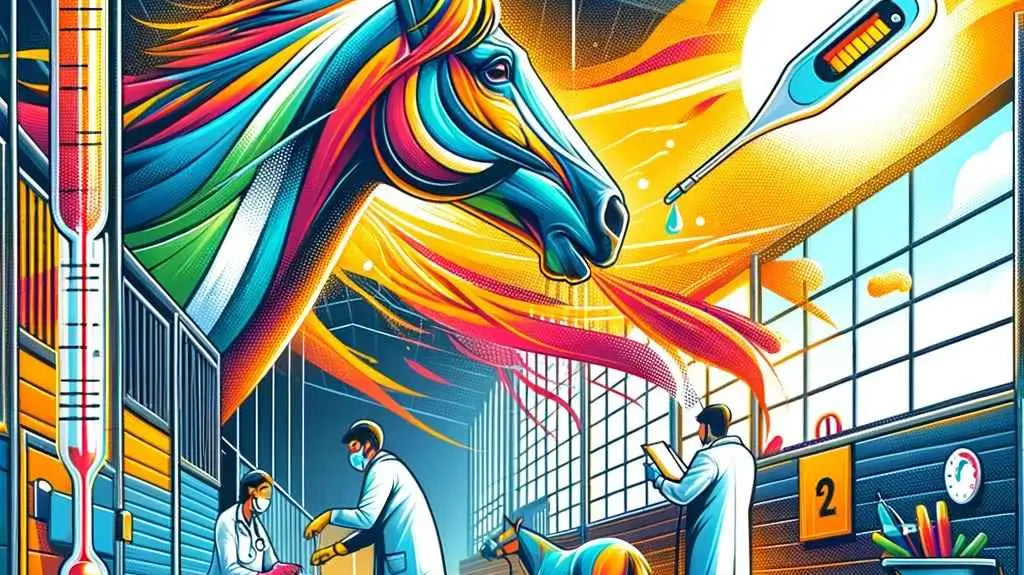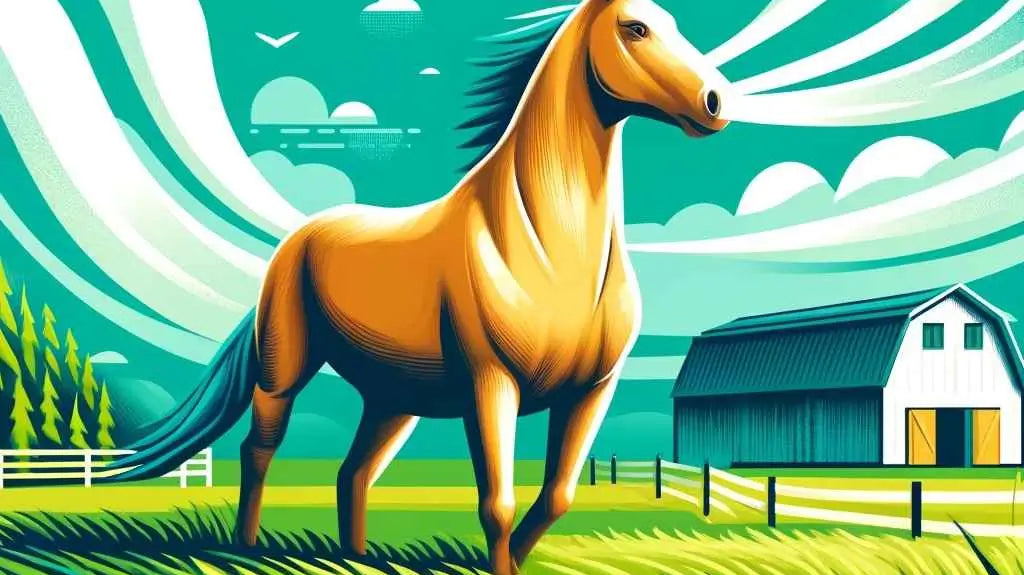| Condition | Causes | Symptoms | Management Strategies |
|---|---|---|---|
| Osteoarthritis | Age, overuse, poor conformation, obesity | Pain, inflammation, reduced mobility | Weight management, orthopaedic shoeing, NSAIDs, supplements |
| Laminitis | High sugar diets, lush pastures, metabolic disorders | Severe pain, lameness, hoof sensitivity | Dietary restrictions, anti-inflammatory medication, supportive care |
| Tendon and Ligament Injuries | Overexertion, accidents, improper training | Pain, swelling, decreased function | Rest, cold therapy, controlled exercise, rehabilitation |
Introduction to Joint Health in Horses
Horses, like elite athletes, often encounter joint problems that can affect their performance and overall quality of life. As equestrian enthusiasts, it's our job to ensure they get the best care possible. In this article, we'll explore the most prevalent joint issues that plague these magnificent creatures and offer tips on how to manage them effectively.

Whether you're a seasoned trainer or a first-time horse owner, understanding these issues is crucial. Joint problems can range from mild discomfort to severe conditions that could potentially end a horse's career. Early detection and proper management are your best defences against these debilitating conditions.
Understanding Osteoarthritis (OA) in Horses
Osteoarthritis is a chronic condition characterized by the deterioration of joint cartilage. It is particularly prevalent among older horses but can affect those at any age due to various factors. A study indicates that over 50% of horses over the age of 15 suffer from OA, with the incidence increasing as horses age.

Factors contributing to OA include age-related wear and tear, poor conformation, and excessive use of the joints during high-impact activities. Even everyday activities, if not managed properly, can increase the risk of developing this painful condition.
The Role of Conformation in Joint Health
Conformation refers to the physical appearance and structure of the horse. Poor conformation can significantly impact how stress is distributed through the joints, which can accelerate wear and lead to conditions like OA. Ensuring that your horse has correct conformation through breeding and early assessment can help mitigate these risks.
Preventive Measures for Joint Health
Maintaining optimal weight and regular, moderate exercise are key in preventing joint problems. Overweight horses are under greater stress, making them more susceptible to joint issues. Incorporate a balanced diet and regular veterinary check-ups to catch any signs of joint distress early.
Laminitis: A Critical Concern for Horse Health
Laminitis is not just painful—it can be life-altering for horses. This condition affects the laminae, the tissues that connect the hoof wall to the bone within. Laminitis can lead to severe complications, including the potential for the pedal bone to separate from the hoof wall.

Triggers for laminitis include dietary problems, such as access to excessive amounts of lush pasture or high-sugar feeds, and systemic conditions like Equine Metabolic Syndrome (EMS) and Cushing's disease.
Effective Management of Laminitis
Immediate and effective management is critical when it comes to laminitis. Reducing sugar intake, implementing a strict feeding regimen, and providing supportive care through customized shoeing and soft bedding can make a significant difference in recovery and pain management.

Medications that reduce inflammation and pain are often prescribed, and in some cases, surgical intervention may be necessary to alleviate pressure and improve prognosis.
Tendon and Ligament Injuries: Prevention and Care
Tendon and ligament injuries are common in athletic horses and can range from mild strains to severe tears. These injuries can sideliner a horse for months and significantly impact their performance and career longevity.

Causes of these injuries include overexertion and accidents during training or competition. Adequate warm-up, proper training techniques, and attentive care can greatly reduce the risk of these debilitating injuries.
Rehabilitation and Recovery from Tendon Injuries
Rest and recovery are essential for horses recovering from tendon and ligament injuries. Use of cold therapy and controlled exercise as part of a rehabilitation program can help to manage swelling and promote healing. Consulting with a veterinary specialist is crucial to tailor a recovery plan suited to the severity of the injury.

Supporting Joint Health with Supplements
Maintaining joint health through dietary supplements is an effective strategy for managing and preventing joint issues. Products containing glucosamine, chondroitin sulphate, and MSM are particularly beneficial Joint Supplements.

Strategies for Early Detection and Prevention of Joint Issues
Early detection plays a critical role in managing joint health in horses. Regular veterinary check-ups can help identify early signs of joint deterioration before they become more severe issues.

Proactive measures such as consistent exercise routines and balanced nutrition not only keep your horse in top physical form but also minimize the risk of joint problems developing in the first place. Ensuring that your horse has a proper diet rich in essential nutrients supports overall joint health and functionality.
The Importance of Nutrition in Joint Health
Nutrition is a cornerstone of good joint health. Supplements that include ingredients like glucosamine, chondroitin, and hyaluronic acid have been shown to improve joint function and reduce inflammation.

Regular use of joint supplements can help maintain the cartilage, the gel-like substance that cushions joints and helps reduce friction during movement. This preventative measure is particularly important for aging horses or those in competitive sports.
Concluding Thoughts on Managing Horse Joint Health
In conclusion, while joint problems can be a daunting aspect of horse care, they are often manageable with the right approaches and interventions. Understanding the causes and symptoms is the first step towards effective prevention and treatment.
Horse owners and caretakers must be vigilant in observing their horses for any signs of discomfort or changes in mobility. Pairing this vigilance with regular veterinary care and proper nutrition can lead to significantly better outcomes for horses suffering from joint issues.
Learn More About Horse Joint Health
For more detailed information on horse joint health and treatments, visit our detailed guide on Top 10 Horse Joint Supplements and discover how to stride ahead with these bestsellers.

What joint problems do horses have?
Horses commonly suffer from conditions like osteoarthritis, laminitis, and tendon and ligament injuries. These issues can significantly affect their mobility and overall quality of life.
What are the symptoms of degenerative joint disease in horses?
Symptoms of degenerative joint disease, or osteoarthritis, in horses include persistent joint stiffness, swelling, reduced mobility, and noticeable pain during movement.
What is the most common arthritis in horses?
The most common form of arthritis in horses is osteoarthritis. This degenerative joint disease is characterized by the breakdown of cartilage in the joints, leading to pain and limited joint function.
What are the symptoms of osteoarthritis in horses?
Symptoms of osteoarthritis in horses include joint stiffness after rest, swelling in the joints, heat in the affected areas, and a gradual decrease in the range of motion.




